As a major contributor to global carbon emissions, the construction industry faces growing pressure to adopt low-carbon solutions. At CONIX RDBM ARCHITECTS, this commitment begins at the design stage. Managing Engineer Bernard De Troch hihglights the firm's holistic approach to reducing environmental impact across projects.
During the design phase, will you first consider low carbon building materials and how do you rate their environmental impact on building?
Bernard De Troch: CONIXRDBM closely monitors social, environmental, and political trends in the design of its buildings. This proactive approach ensures that our designs are not only aesthetically pleasing but also aligned with evolving societal values and regulations. With this commitment, we aim to make building partners aware of their broader social responsibility, particularly regarding the environmental impact of buildings on future generations. From the earliest design phases, sustainability principles are integrated, adhering to certification standards such as TOTEM, BREEAM, LEED, and other eco-labels. In fact the European Union started recently a unified classification system (Taxonomy Environmental Delegated Act 17 June 2023).
To minimize environmental impact, our architectural team strives to create structures that reduce material consumption, leverage renewable resources, and promote energy efficiency. This involves the use of sustainable construction techniques and materials that are selected based on rigorous criteria: durability, circularity, and low carbon emissions.
Digital tools such as Building Information Modeling (BIM) are crucial in this process. The integration of BIM allows for precise analysis and comparison of material choices, making it easier to predict both the financial and environmental outcomes. The quantities of materials used, extracted from BIM models, combined with the information from databases like MADASTER and the National Environmental Database (NMD) enable the calculation of CO2 emissions, making it possible to simulate and assess various scenarios early in the design process. These tools help quantify the environmental impact in much the same way that unit prices allow for financial cost estimates. By analyzing multiple options in terms of CO2 footprint, energy consumption, and lifecycle performance, we can provide clients with data-driven insights to make informed decisions.
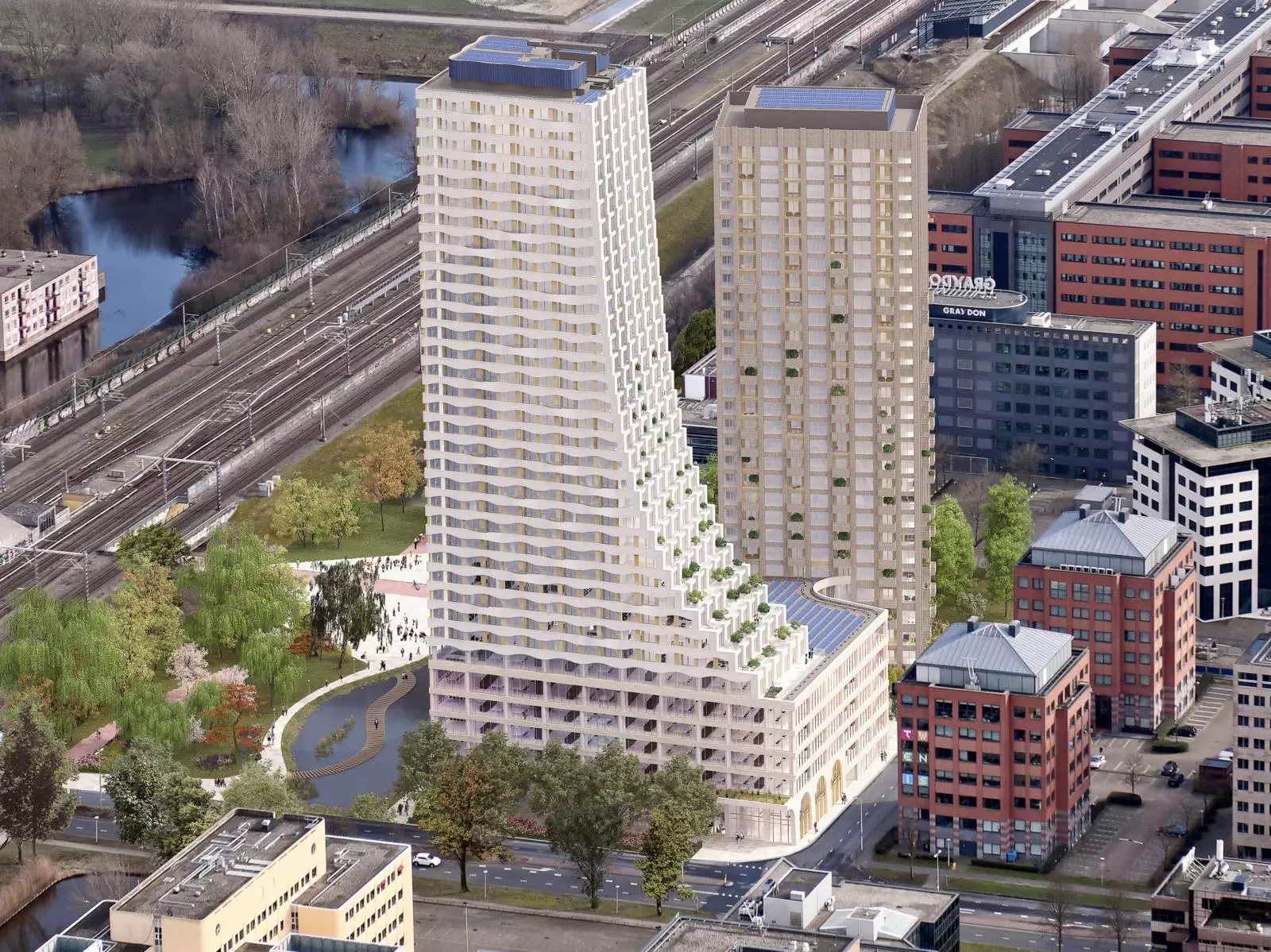
The Ensemble, designed by Van Belle & Medina + CONIX RDBM Architects, is one of the largest and most sustainable mixed-use high-rise projects in Amsterdam. All precast claddings were made with Aalborg White.
In this way, we ensure that different building scenarios are not only compared based on financial aspects but also on their environmental performance, allowing for the creation of buildings that are truly sustainable in every aspect—from design and construction to long-term operation and eventual decommissioning.
Cementir is committed to carbon neutrality by 2050 and launched Lower Carbon white cement D-Carb in Europe this year. From the perspective of an architect, do you see growing demand for low-carbon cementitious materials in future projects?
Bernard De Troch: CONIXRDBM is witnessing a growing awareness and sensitivity among its clients, especially regarding sustainability in the construction industry. Large developers, particularly those involved in significant real estate projects, are increasingly looking to access sustainable financial funds. These funds often come with strict environmental, social, and governance (ESG) criteria, which have become pivotal in securing financing for new developments. Furthermore, the European Union plays an important role in the process to obtain a net zero trajectory by 2050 by defining a sustainable finance framework for manufacturers and distributors of financial products to end-investors.
Material selection plays a key role in this process. From the outset, the project team must carefully evaluate materials based on their environmental impact, including factors such as their carbon footprint, recyclability, and lifecycle performance. This means considering materials that are locally sourced, renewable, or have a low embodied energy.
Developers increasingly favor innovative materials like sustainable concrete alternatives, recycled metals, and bio-based insulation, which help meet both the technical and environmental demands of modern construction.
By prioritizing renewable resources and exploring innovative materials like recycled composites, bio-based products, and low-emission concrete, we ensure that our buildings contribute positively to the environment.
In this way, sustainable development becomes a mutually beneficial pursuit—developers can access favorable financing options, while society benefits from more environmentally responsible and future-proof buildings.
D-Carb® white cement lowers CO2 emissions by 15% compared to Aalborg White® CEM I , offering industrial end users with low-carbon building material solutions that align with sustainable building certifications. It supports construction decarbonization while maintaining both performance and design flexibility.
Modular construction is known for shorter constructions time, reduced environmental impact, cost savings and alignment with green building standards and certifications. Could you elaborate on how modular construction contributes to efficiency, sustainability and reduction of carbon footprint?
Bernard De Troch: Modular designs are pursued with precision and efficiency throughout various stages of the design process. At the conceptual phase, we employ standardized templates that have been meticulously developed based on best practices and rigorous analysis. These templates incorporate essential elements such as the optimal placement of the elevator, the organization of apartments around a central core, and the distribution of utilities. This approach streamlines the design process and ensures consistency across projects, enabling us to create flexible and scalable solutions that can be adapted to different building environments.
These modular templates allow for significant design efficiency, especially in multi-unit residential developments, where uniformity in layout can reduce costs and construction time. The strategic placement of shared spaces, like staircases and corridors, minimizes material waste and enhances the overall functionality of the building. This also facilitates future adaptability, allowing spaces to be reconfigured as needed, which is essential for long-term building sustainability.
In the next stage, attention turns to the load-bearing structure of the building, where material selection is of critical importance. A detailed comparison is made between materials such as concrete, timber, calcium silicate, and gypsum blocks. This phase involves a thorough study to weigh the pros and cons of each material, considering factors like:
• Load-bearing capacity: The strength and durability of each material are assessed to ensure they meet the building’s structural requirements. Concrete, for instance, offers immense compressive strength.
• Fire resistance: Safety is a top priority, and the fire-resistant properties of different materials are carefully evaluated. Concrete provides excellent fire resistance making it a viable option for sustainable building designs.
• Acoustic performance: Soundproofing is essential for multi-unit buildings, especially in residential settings. The acoustic insulation properties of each material are considered to ensure privacy and comfort for occupants.
• Sustainability: Environmental impact is also a major consideration.
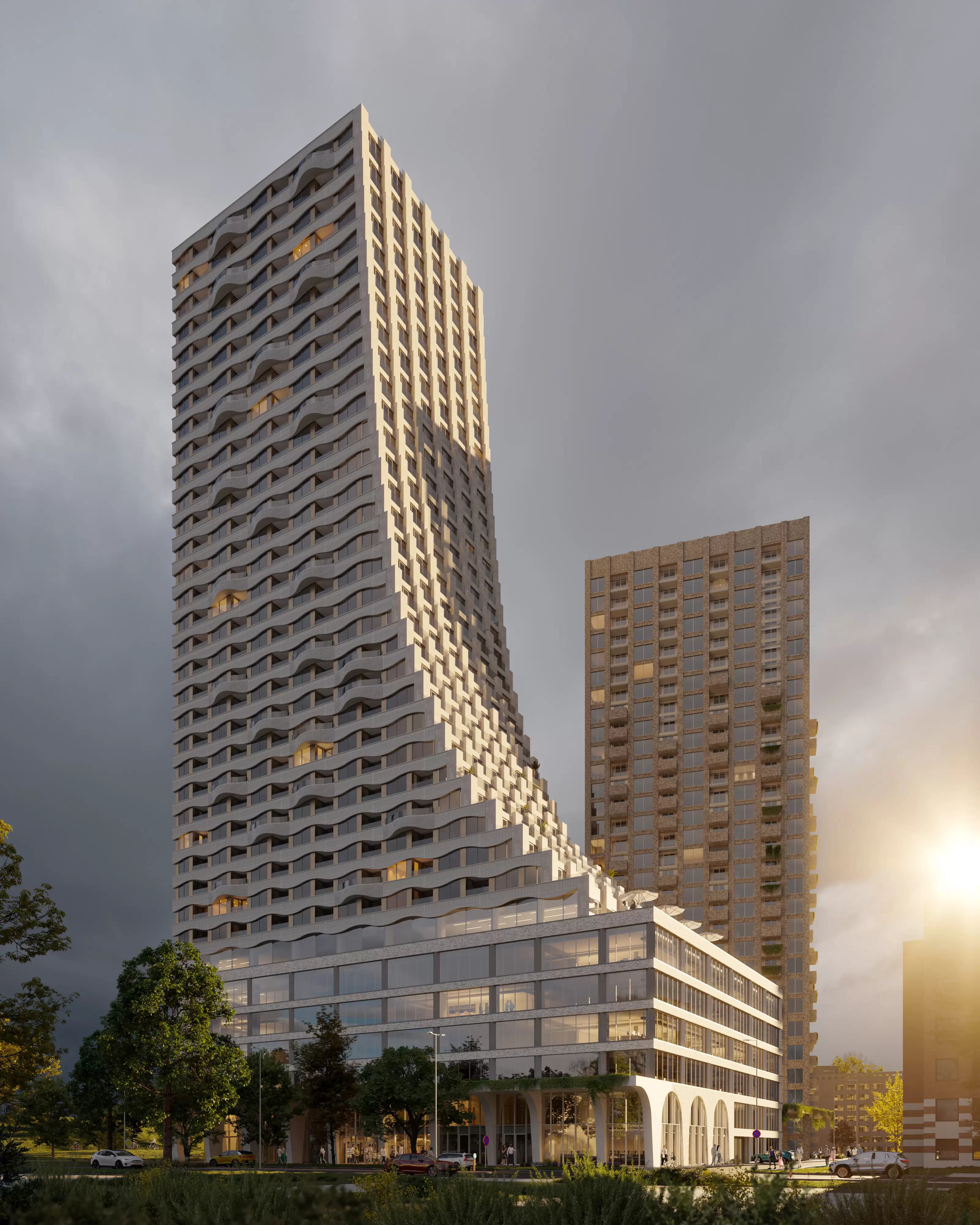
Developer: Ensemble Real Estate, Great Grey Investments, Wonam en Greystar; Architect: CONIX RDBM and Van Belle & Medina; Contractor: Cordeel Group; Precaster: mbX;White Cement: Aalborg White
Once the material choices are determined, the focus shifts to maximizing modularity during the tendering process. The goal here is to ensure a high degree of repetition in the design through optimal modularity. This repetition simplifies the production process, enabling the use of prefabricated components that can be manufactured off-site. CONIXRDBM intensively coordinates the optimal fabrication specifications in close negotiation with contractors and suppliers with regards to:
1. Efficiency and Speed: Prefabrication allows components to be produced in a controlled factory environment, ensuring faster on-site assembly.
2. Quality Control: Manufacturing components in a factory setting allows for tighter quality control compared to traditional on-site construction. Prefabricated elements are produced in ideal conditions, ensuring consistency and minimizing defects.
3. Sustainability: Prefabrication can contribute to sustainability efforts by reducing construction waste, optimizing material usage, and limiting site disturbance. With factory production, material cuts and usage are optimized, leaving little to no surplus, which translates into a more environmentally responsible construction process.
4. Cost-effectiveness: Although the upfront costs of prefabrication may be higher in some cases, the time savings, reduction in labor, and efficiency in material usage often result in overall cost reductions. Prefabrication also allows for more predictable scheduling, which helps avoid unexpected delays and associated costs.
By adopting modular design and prefabrication, CONIXRDBM can ensure a streamlined, efficient, and cost-effective construction process that aligns with modern standards for sustainability, quality, and durability.
The Ensemble
Designed by Van Belle & Medina + CONIX RDBM Architects, the Ensemble is one of the largest and most sustainable mixed-use high-rise projects in Amsterdam, with two residential towers reaching 100 and 120 meters, built without scaffolding. mbX has been commissioned to provide over 1,500 precast white concrete elements made with Aalborg White cement, including columns, facade bands, ceiling cladding, and facade elements. Each element will undergo high-quality finishing, with around 500 polished and 1,000 both sandblasted and polished to ensure the landfill side remains visible. These elements will be pre-assembled with aluminum on the ground, attached to the HSB, and then mounted as complete units, allowing the building to rise efficiently floor by floor.
The Ensemble is the premier new destination in Amsterdam Zuidoost for business, leisure, and living. This state-of-the-art mixed-use development features approximately 19,000 SQM LFA of prime office space, meticulously designed for companies looking to connect, grow and innovate. With a full range of amenities and a vibrant community atmosphere, The Ensemble is set to become the new standard for connection and collaboration in the Amsterdam area. More than just an office space, The Ensemble is a destination for thriving professionals and dynamic enterprises. Opening in 4Q 2025.

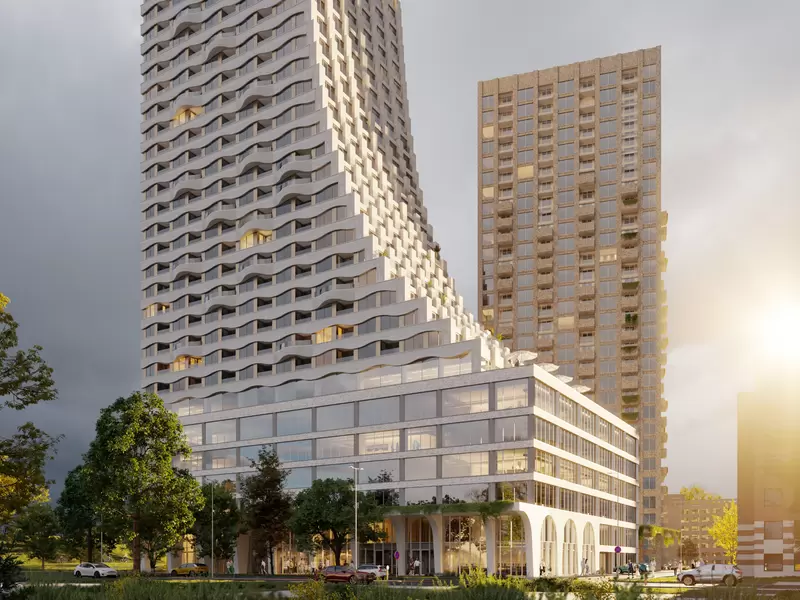
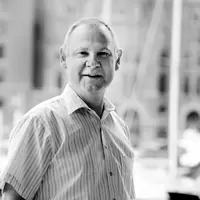
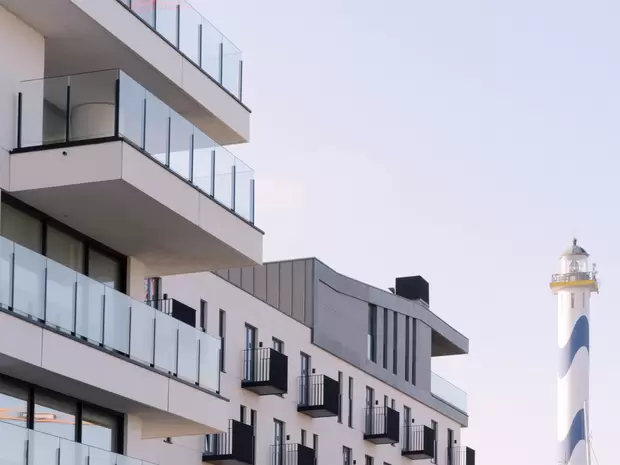
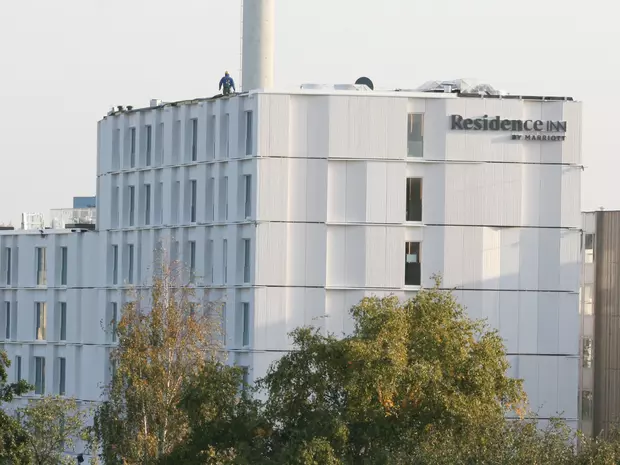
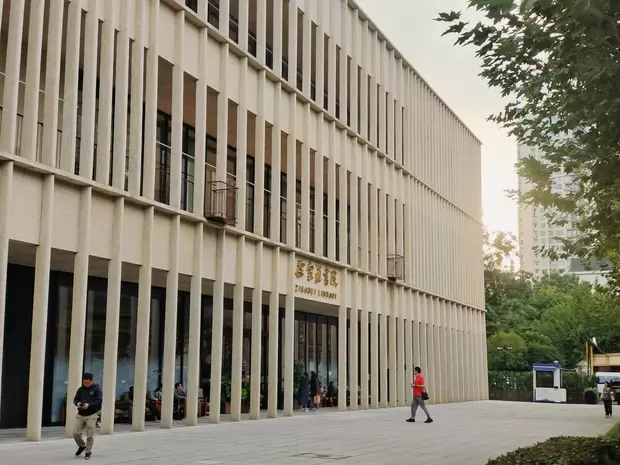
Share on